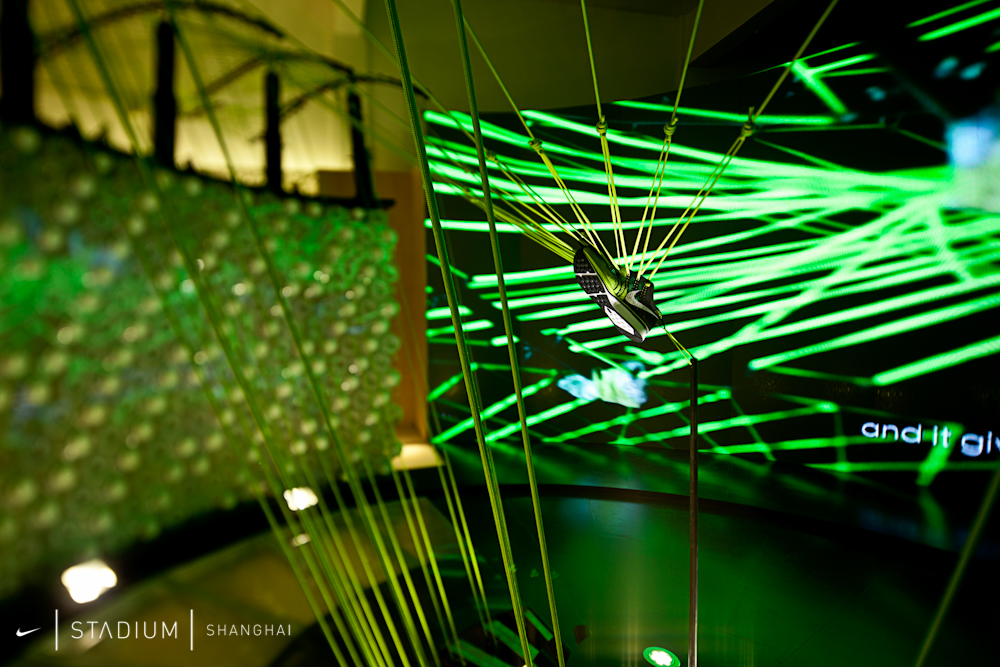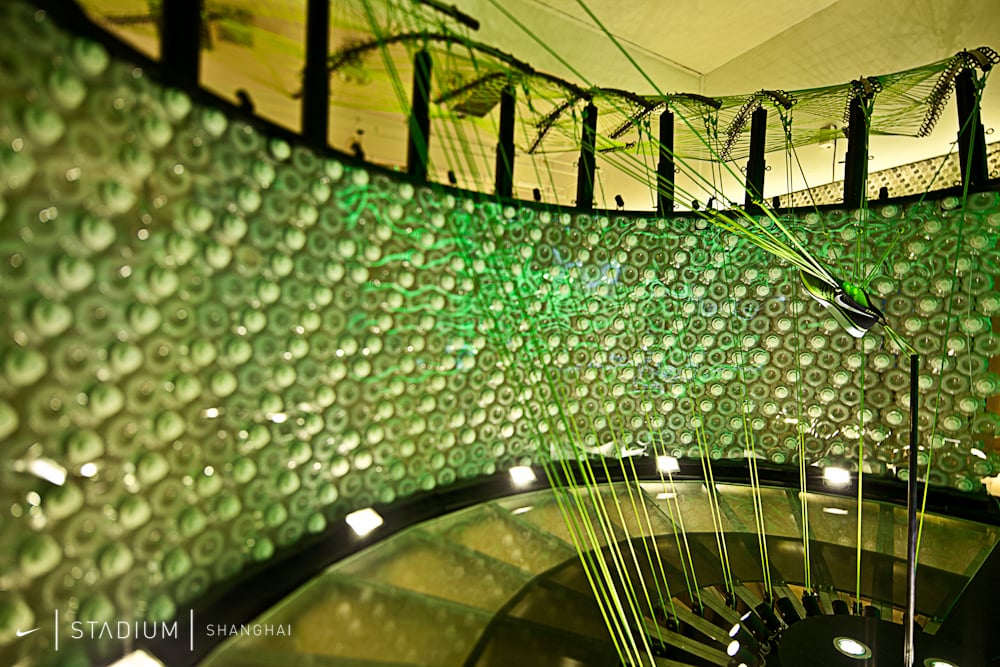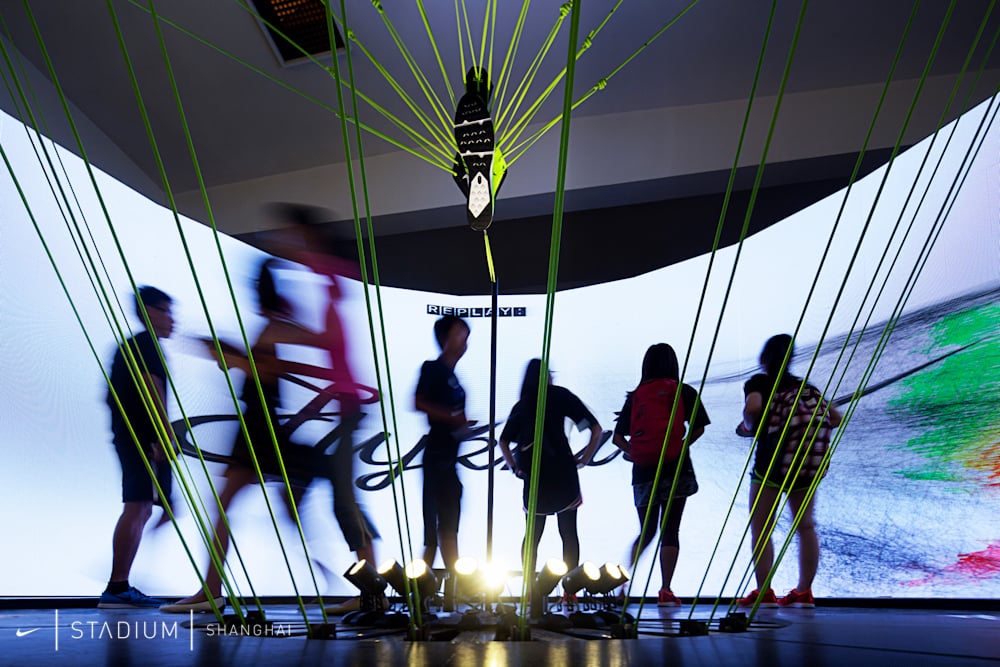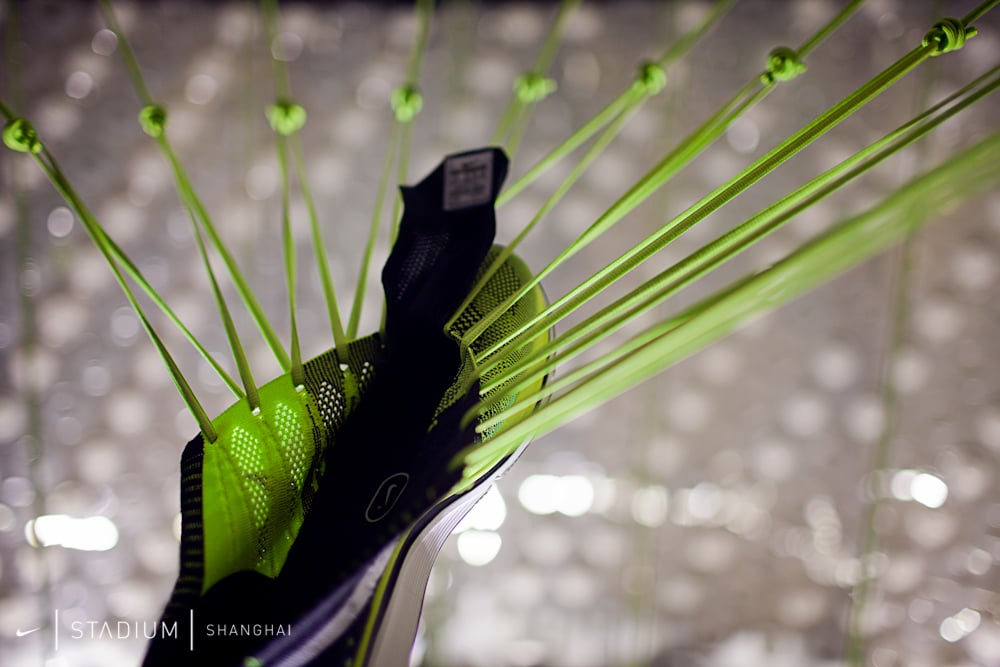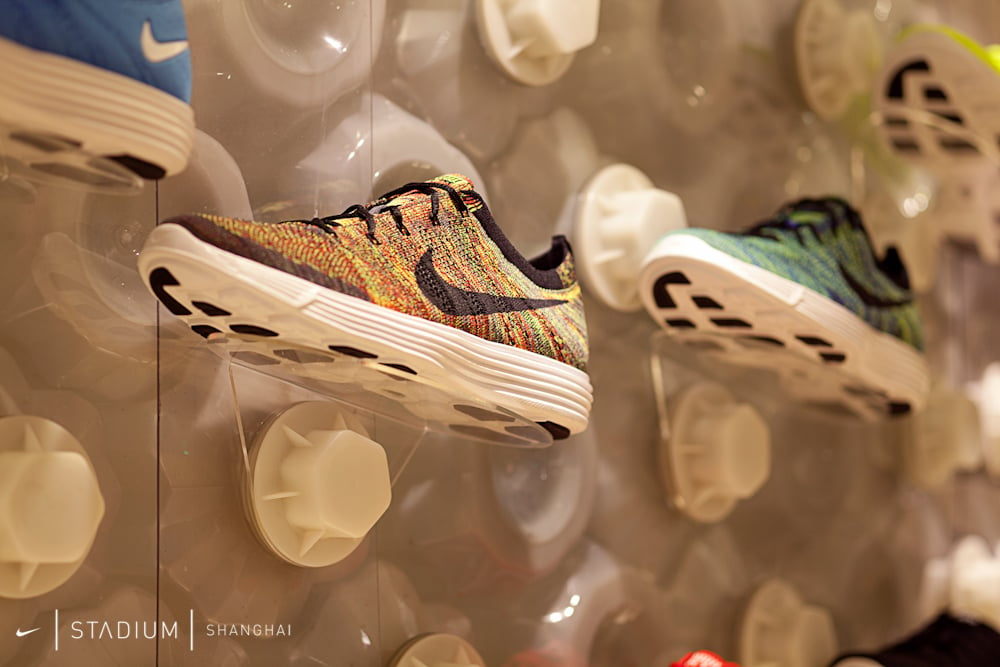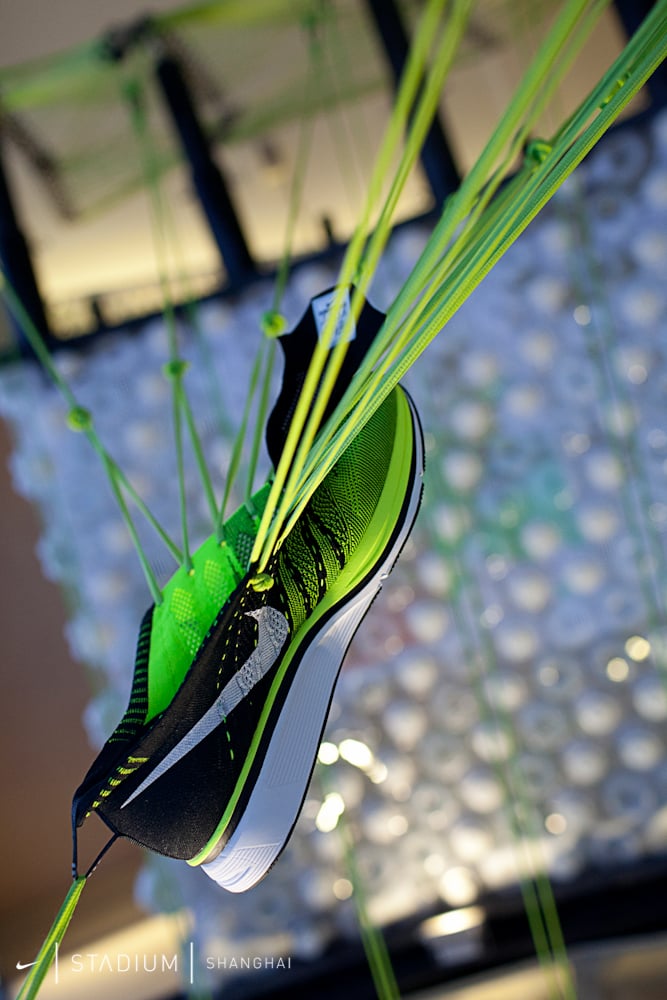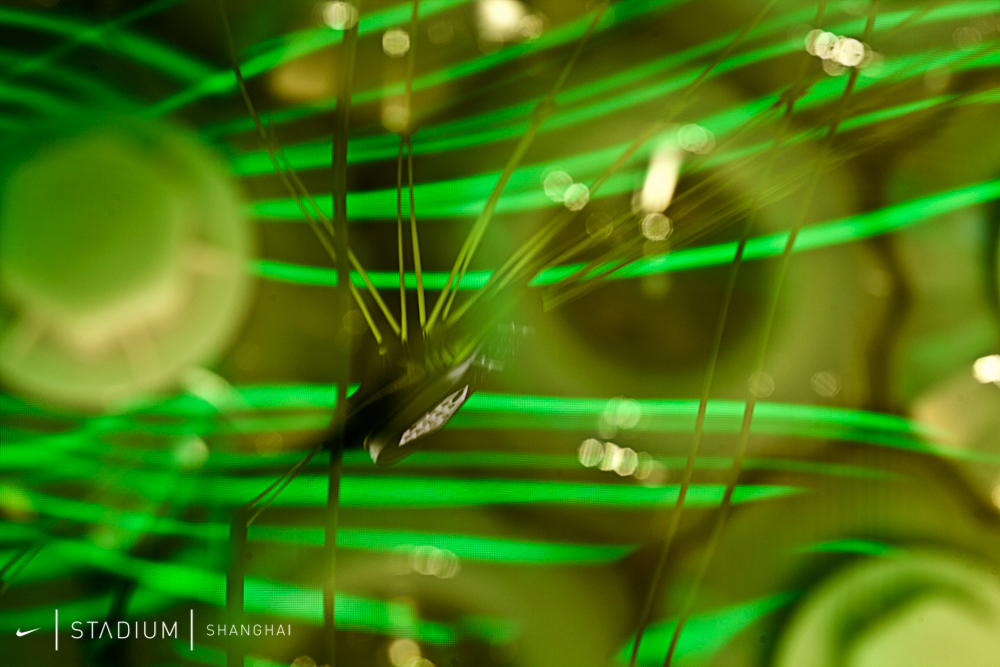
As a part of the Nike Flyknit Collective events at Nike Stadium Shanghai, designer Arthur Huang created a special installation.
Leading regional innovator, architect, and designer Arthur Huang unveiled the “Feather Pavilion” last week during the Nike Festival of Sport. A visionary manifestation of the four key tenets of Nike Flyknit design (lightness, performance, formfitting and sustainability), Huang’s Feather Pavilion is an interactive installation designed to inspire ideas within the region’s young creative community as the Flyknit Collective workshops kicked off in Shanghai.
The Flyknit Collective workshops played a role in both the concept and execution phases in both Huang’s Feather Pavilion and in other Flyknit activations around the world. While the process itself is intended to inspire each cities creator, the ultimate goal is for the final expressions to inspire the communities around them in new transformative ways. Huang is one of a number of Innovators across different disciplines and cultures that has been invited to convert the abstract benefits of Nike Flyknit into practical, physical structures and spaces.
Rather than simply pointing out the earth’s eco challenges, Arthur Huang as an university professor, engineer, architect and entrepreneur has been dedicating all of his intellectual and physical capacity to create executable sustainable products and building solutions since 2004. Mr Huang formally established Miniwiz in 2006 and since then the company has grown organically into a profitable international eco-solution product brand employing over 40 full-time professional engineers, architects and designers.
A native of Taipei and holding degrees from both Cornell and Harvard, Huang’s interpretation of Nike Flyknit’s key tenets — performance, lightness, formfitting, and sustainability — is both metaphorical and literal, resulting in the Feather Pavilion.
Performance is represented through every element of Huang’s work – just by walking into the pavilion, stepping onto the platform creates a sensory action elsewhere in the structure. Kinetic energy changes the look and the actual architectural form of this building, The ceiling moves like a feather, sounds are emitted and light and video is transmitted both internally and externally throughout the walls and floors, resulting in a sense of technical and musical harmony.
Lightness imbues every element of the Feather Pavilion experience – beyond being visually themed on the very essence of lightweight, the lightweight feel and transparency of the recycled TPU POLLI-Brick construction twinned with the shifting ceiling makes it utterly immersive.
Formfitting is embodied in the precision engineered, industrial and tailored spirit of this project. An intricate pulley system mirrors the motion of a loom, while the building adjusts in line with the form of its occupants, taking the form of a feather in the wind, transforms pure physics into an expansion of Nike’s breakthrough.
Sustainability is more than just a buzzword. It’s a testament to MINIWIZ’s work in the field that the sustainable nature of this entire structure, with the POLLI-Brick compression walls, might go unnoticed. This is the art of turning trash, something of no perceived value, something seen as primitive, into something awe inspiring. Made entirely from recycled TPU, each POLLI-Brick interlocks to create a resilient structure. To add further 100% organic reinforcement, recycled rice husks continue this design’s merger of tradition and the future of creativity. Inspired by a visit to Nike’s R&D lab at WHQ in Beaverton, a yarn runs through the pavilion in a Volt Green colour that mimics the smaller scale version, turning into rugged caribiner cables that tie, with the threads becoming rope.
